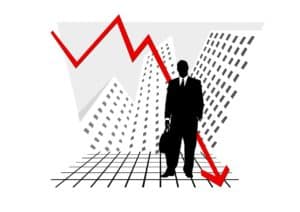The life cycle of a business is a determining factor for any entrepreneur. When we study a company we must understand where it is in its life cycle. The latter has a direct impact on its financial structure, its financial needs, and its resources.
In addition, the company offers a good or services to achieve its turnover. It is therefore essential to understand the life cycle of the product (good or service).
Thus, this article highlights the business lifecycle stages in addition to the product lifecycle stages.
What are the Stages of a Business Life Cycle?
Businesses start and grow in totally different ways, that is, each grows in its way. To allow a standard view of its evolution process, the life cycle theory of the company comes to classify the main lines of its evolution.
The stages of a business life cycle are creation, start-up, survival and maintenance, expansion and growth, and maturity. These stages can all be followed by a decline, however, we see companies that are mature and remain stable with slight growth for many years.
That being said, this attempt at standardization is useful to have a framework of thought to understand the evolution of a company over time. However, each company has its evolution. They will not always respect all its stages, because their financial context is different which brings variance in the sequence of their stage of development.
How to Create a Business?
These days, there is plenty of financial gurus out there who will dangle the fact that it’s easy to start a business and get rich in a few months. The reality is much more complex and requires many sustained efforts.
Our philosophy of starting a business is against the fact that you have to have an idea to start creating. We believe that ideas come from within the creative process. To start, you have to pay particular attention to what you spend the most time in and so the ideas will come.
These findings are hard to swallow since the majority of people who talk about starting a business are waiting for the right idea. Their first instinct upon reading these lines is to say, “That’s a lot easier said than done! How is it possible to create without an idea? “.
In our view, the first creative step is not to wait for the right idea, but to force it out. A simple ‘brainstorming’ technique is applicable, i.e. you can highlight your talents and what you spend the most time doing on a sheet or board. Thus, certain elements will emerge and you will have started your process of reflection.
According to Mark Cuban, billionaire, owner of the Dallas Mavericks (NBA), entrepreneur, and star of the American show Shark Tank, to create a business you have to focus on the things for which you give the most time. His philosophy can be summed up as follows:
“Don’t follow your passions, follow your efforts”
The translation of this quote is as follows: Do not follow your passions, follow your efforts.
He doesn’t recommend people to follow their passions like the majority of people say to do. He replies that he has always been a basketball fan since he was a kid, but that doesn’t make him an NBA player.
According to him, it is much easier to create something in what you are good at because you generally appreciate putting in the effort when you perform. By working harder and harder we have the possibility of becoming very good, even excellent in what we do. Have you ever hated doing something you’re great at?
Take a few moments to reflect on the things you put the most effort into in your life. This is where you invest your time.
Of course, Mr. Cuban’s words should not necessarily be taken at face value. One of your passions may be the thing you invest the most time and effort into. So much the better if that’s the case, but what’s most important is to start your thinking process, regardless of whether you have passions or not.
Perhaps you tell yourself that what you invest the most time in is not a possible source of business creation.
In this situation, you have two choices:
- Think outside the box and discover how to monetize what at first glance seems impossible
- Open your mind to new horizons
In this second case, do not be afraid to try several novelties. The goal is not to try a specific number. You need to ignite the flame of curiosity within you. Be constantly curious and you will see that things will move faster and faster.
Typically, the start-up business has little to no income. The goal is to build an identity for this company that will offer a product.
At this stage, entrepreneurs must perform to allow the business to grow.
How to Start a Business?
The start-up process begins and progresses in parallel with the business creation process. That is to say, you must have certain moments when you take a step back by being in a phase of reflection. You also need to be executive in doing the tasks that are on your to-do list. It is, therefore, necessary to create and execute at the same time.
Starting a business takes time, effort, creativity, and perseverance. working full time is no excuse for not starting a business.
Nowadays, it is quite possible to start a part-time business. Just be optimal and focus your free time on what you want.
According to Jeff Bezos, founder of Amazon, everything that is great started small.
“The biggest oak starts from an acorn”

The translation of this quote reads: The largest oak begins with an acorn. If you want to do something new, you have to be willing to let that seed grow into a sapling and maybe one day it will be a big business that will run on its own.
Mr. Bezos goes along with the fact that the slogan of his other company, Blue Origin, is step by step fiercely. You can’t skip steps, you have to take one step at a time, things take time, and there are no shortcuts, but it is important to do these steps intensely and with enthusiasm.
What are the Stages of a Product’s Life Cycle?
Once the creation and start-up stages have been initiated, the result will be the offer of a good or service. A company can undertake several things at the same time. In other words, it can offer several products. Thus, it is useful to understand the life cycle of a product before moving on to the next stage of the life cycle of a company.
As a whole, the life cycle of a product consists of the following stages:
- The idea
- Development
- launch
- Growth
- Maturity
- Saturation
- Decline
- Possible raise
A great article from Hubspot summarizes the basics you need to know about a product’s lifecycle.
How does the Business Survive?
The business is now on track. The start-up was successful and the company is now part of the industry as it achieves a certain level of sales.
To survive, the company must innovate and thus remain competitive while continuing to maintain relationships with customers and suppliers, in addition to gradually introducing new employees who will fill in the gaps. Several internal and external factors have an impact on the survival of the company.
In an article on the financial problems of companies, we have compiled a table of factors that influence the survival of companies:
| Internal factor | External factor |
|---|---|
| Staff knowledge | Environmental |
| Finances | Legal |
| Management of leaders | Macroeconomics |
| Lack of resources | Microeconomics |
| Resistance to change | Politics |
| Social | |
| Technologies |
One of the criteria showing part of the failures of companies is the one presented in the table below. Other criteria such as profitability and legality can also affect the survival rate of businesses.
Annual Rates of Insolvency, Bankruptcy, Proposal in Canada

*Sources : Statistique Canada, 2021
How to Grow a Business?
When the company manages to overcome all the obstacles in its path and is well established in its market by generating significant cash flow, then it is ready for growth. Growth depends a lot on the access to financial resources that the company has because without capital it will be difficult for the company to put its projects in place.
In general, the company is growing when it is at the stage of establishing strategies to acquire new market shares of its industry or other industries.
The growth of the company brings many complications.
Here are several:
- Leaders need to hire more and more people. In many cases, they will have to hire human resources managers to help them in their research and hiring of new employees.
- The company wants to stand out from its competitors, so it sets up marketing campaigns. This can be expensive and sometimes they require the hiring of a marketing specialist.
- The financial management of the company becomes more and more complex over time. Hiring a finance president, chartered accountants, and any other assets, are other costs that the company has to pay.
- Nowadays, companies that are not present on the Internet are losing a lot of opportunities. It is necessary to do business with companies specializing in this level or to hire other people.
We could talk about supply chains, repairs, customer and supplier relations, etc.
When the company wants to grow, it must establish strategies that will allow this growth.
BDC raises 8 strategies to foster business growth:
- Greater market share
- Find new markets
- Diversification of products in the same market
- Business takeover
- Franchise purchase
- Franchise your business
- Strategic partnerships
- Repositioning and efficiency
The article cited above leads to several other interesting articles that can add to your knowledge of business growth.
A growing business needs more and more money for its activities. The relationship between growth and the need for liquidity is exponential.
You can imagine a growing business like a swimming pool that gets bigger at a certain rate. To fill this pool, you need water (it refers to money). The speed at which the garden hose makes the water flow is the company’s ability to have cash.
This pool is constantly emptying, as the company uses its cash for its operations. The managers must ensure that there will never be a lack of water in the pool.
If the pool grows too quickly, it will be difficult for managers to maintain the rate of filling. Especially knowing that the bigger the pool, the faster it will empty.
At a certain point, the growth of the business begins to slow down. She is about to reach the stage of maturity.
What is the Maturity Stage of a Business?
A company cannot be in a stage of rapid growth in perpetuity. Some exceptions exist, however, the reality of many companies in the achievement of stage more stage which is called maturity.
The stage of maturity of a company is reached when it has a high level of turnover compared to the average of the industry and it has significant market shares in the industry allowing it to have high bargaining power.
At this stage, the company persists in its implementation of continuous improvement processes to remain competitive.
The company may have some growth in sales, but the annual growth is no longer as intense as in the growth-oriented years.
Relationships are built with customers and suppliers. In many cases, the company enters into partnerships to remain strategic.
Cash flow is increasingly high and large projects can be financed from company resources, making it easier to realize all kinds of possibilities. In some cases, the company can even finance the projects of other companies or its subsidiaries.
Each case is different and the maturity phase will continue until the company’s goods and services are exceeded. This overrun leads to a drop in turnover. The company begins to decline.
What is the Decline Phase of a Business?
Several factors bring difficulties to the company.
When the company is in a phase of decline, it shows a turnover that decreases, and its profitability deteriorates. It is overtaken by the competition or else its niche disappears due to changes in the will of consumers.
To be competitive, the company must deal with new technologies. It must stand out from its competitors by finding methods to satisfy its customers.
In the event of a decline, the company finds it increasingly difficult to meet its financial commitments.
The decline can be devastating and lead to the end of the company’s existence. Fortunately, many are doing well and innovating decade after decade and staying in the race.
Bibliographic sources:







